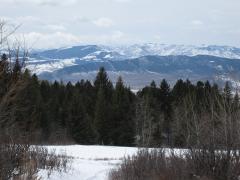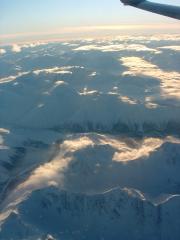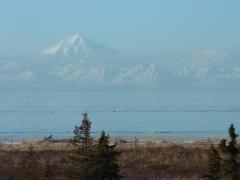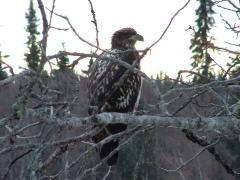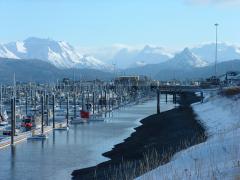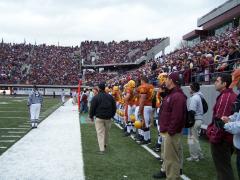My rotation in Soldotna has been one of the highlights of my residency. Soldotna is a small town on the Kenai peninsula, 3.5 hours drive south of Anchorage. I flew into Anchorage and took the Homer Stage Coach shuttle bus to Soldotna, a gorgeously scenic drive with views of water and dramatic mountains (the alternative is flying into Kenai airport from Anchorage, which takes only 20 mins and is not much more expensive). I was greeted in Soldotna by Mary-Annette, a clinic administrator, who was extremely helpful during my time there, helping me to settle in and to obtain my delayed Alaska medical license (I would recommend starting the process way early, at least 3 months in advance). Residents are provided with a car, so getting around is easy, and lodging is comfortable and convenient with plenty of space for family/friends.
I worked at an internal medicine clinic which was conveniently located across the street from a hospital with ICU level care. The practice consists of 7 attendings, with a range of styles but who are uniformly excellent clinicians, teachers, and warm human beings. I think of them as “super-doctors” since they possess a breadth of knowledge and skill, providing quality care to patients with a wide range of illness in a setting with few specialists; some of the attendings practiced GI endoscopy, echocardiography, bone marrow biopsies, and provided chemotherapy infusions. The rotation is flexible and tailored to your interests; could be a great rotation for anyone, especially those interested in rural medicine/primary care, hospitalist, GI, cardiology, oncology. My days consisted of rounding in the morning on my inpatients, seeing patients in clinic late morning and early afternoon, and then checking in on my inpatients late afternoon. The attendings rotated call, so I would check in each morning with the attending that was on call, and they would page me with interesting admits. I had no overnight call, and was on call for one weekend. I saw an extremely broad range of patients, both in the clinic and at the hospital, and was able to get experience performing endoscopy and reading echos. I also sat in on staff meetings in the clinic and in the hospital, which offered great insight into the administrative and financial issues pertinent to running a primary care clinic. I worked with all the attendings, but mostly worked with Dr. John Bramante, who is incredibly kind and really watches out for the residents, making sure that the rotation is a fun and worthwhile experience.
Alaska is a beautiful state, so it is imperative to enjoy some of the natural surroundings while you are there. I went 8/25 to 9/21, the weather was mostly cool and rainy while I was there, not a big deal for a Seattlelite. Dr. Bramante invites residents over to his house for dinner with his family, his home has acres of land, horses, pigs, and 30+ sled dogs! I enjoyed a refreshing ride with the sled dogs on a 4-wheeler (there was not enough snow for sledding at the time I went). I would recommend a week of vacation before or after the rotation for more travel (I wasn’t able to do this due to schedule commitments). However, I did have the chance to go to Denali national park and camp there for a weekend–it was one of the most beautiful places I have ever been, with brilliant fall foliage, breathtaking Mt. McKinley, and tons of wildlife. Another weekend, I went to visit a friend living in Anchorage, went to the Alaska state fair and did some small hikes (flattop mountain and portage glacier). On the drive back, stepping out of the car at Turnagain Arm to enjoy the view, I saw beluga whales in the wild! Soldotna itself is a small town with not much to do, at least based on my experience; there is a cool pub for hanging out called St. Elias. My exploration of Kenai, a town 12 mins away, was a bit more fruitful, I ate yummy halibut burgers at Burger Bus (yes its a burger joint in a old bus) and got my espresso coffee/wireless internet fix at Funkey Monkey, a nice, artsy cafe despite the name. Other activities I would have done had I had more time are visiting Homer, a beautiful seaside town, and hiking around Seward, both ~ 2 hours away from Soldotna.
I had a wonderful experience in Soldotna and would love to talk to you about it. Please feel free to contact me with questions.
Jeanie Yoon (R2)


